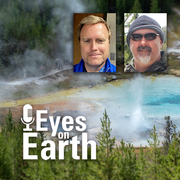Remote Sensing
Remote Sensing
Filter Total Items: 178
Eyes on Earth Episode 137 – Landsat Takes Yellowstone’s Temperature
How do you keep track of thousands of hot spots in an area the size of Yellowstone National Park? Check out thermal satellite data like Landsat’s!
CIDR Request Data – Imaging Requirements
CIDR Request Data – Imaging Requirements
CIDR Request Data – Spatial Requirements
CIDR Request Data – Spatial Requirements
EROS Registration System (ERS)
The U.S. Geological Survey (USGS) Earth Resources Observation and Science (EROS) Registration System (ERS) centralizes all existing user profile and authentication for USGS EROS Web services into a single independent application.
EROS Registration System (ERS) Password Expiration
The EROS Registration System (ERS) system requires a login with a username and password. The password may have an expiration date assigned. The documentation will explain the process and how a user can reset their expiration date.
CIDR Data Acquisition Request Summary
CIDR Data Acquisition Request Summary displays the entered information from Request Data page.
CIDR User Interface Overview
CIDR User Interface Overview
CIDR Data Acquisition Request (DAR) Process Flow
CIDR Data Acquisition Request (DAR) Process Flow document follows a DAR from beginning to end.
CIDR - Requesting Access
The CIDR Tool is restricted to U.S. Federal Civil agencies and require prior approval to access and request data.
CIDR Request Data – Submit Request
CIDR Request Data – Submit Request
Eyes on Earth Episode 136 – The EROS Test Site
The same as the Landsat satellite, only smaller—that’s a fair description of the field spectrometer used at the EROS test site for validating Landsat’s accuracy.
CIDR Request Data – Request Details
CIDR Request Data – Request Details




